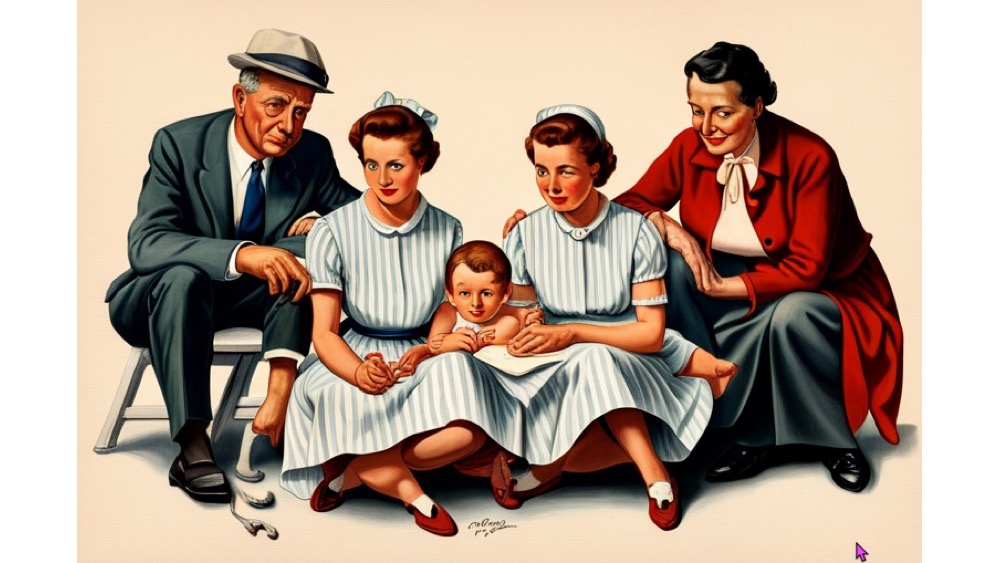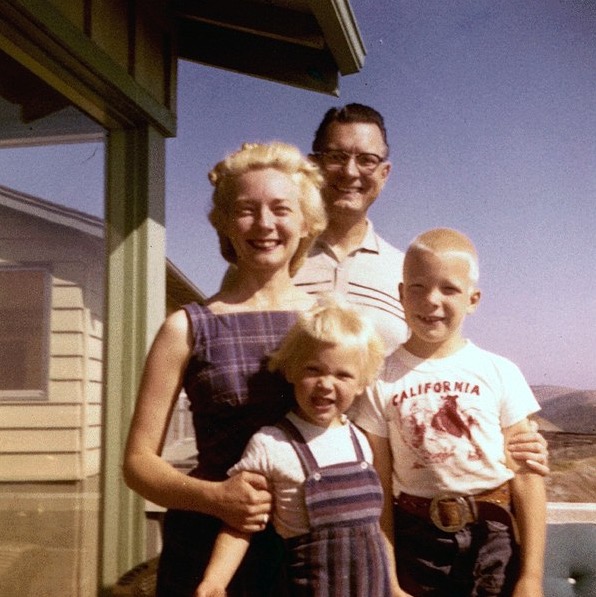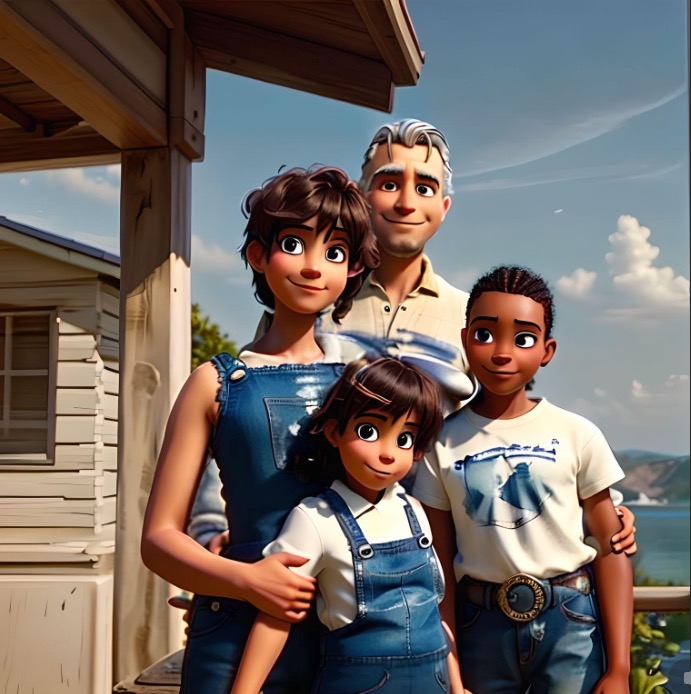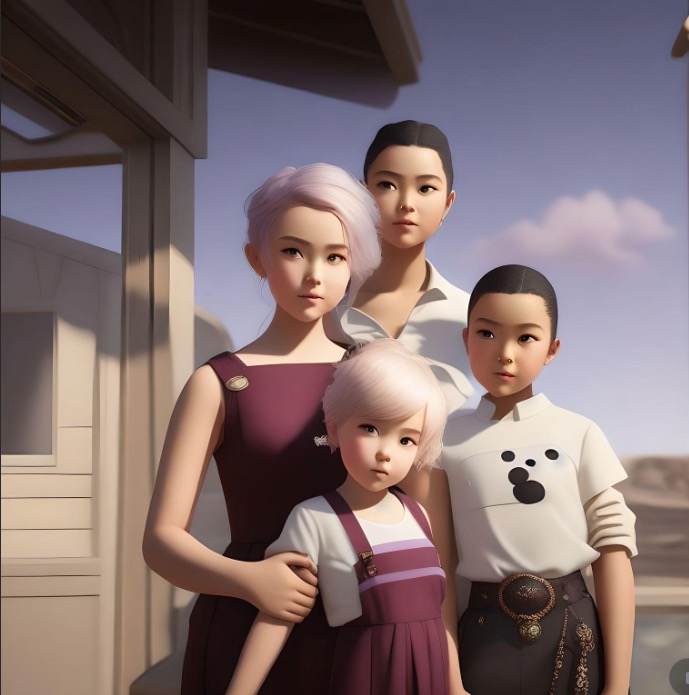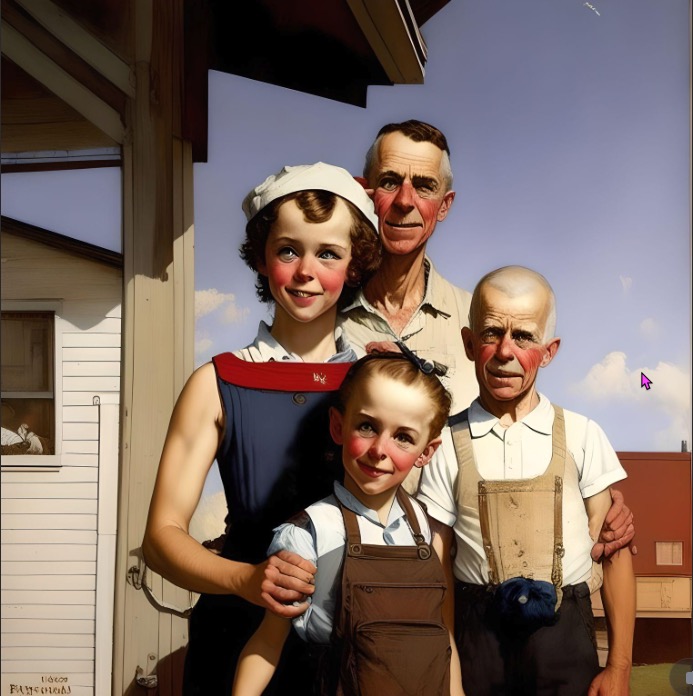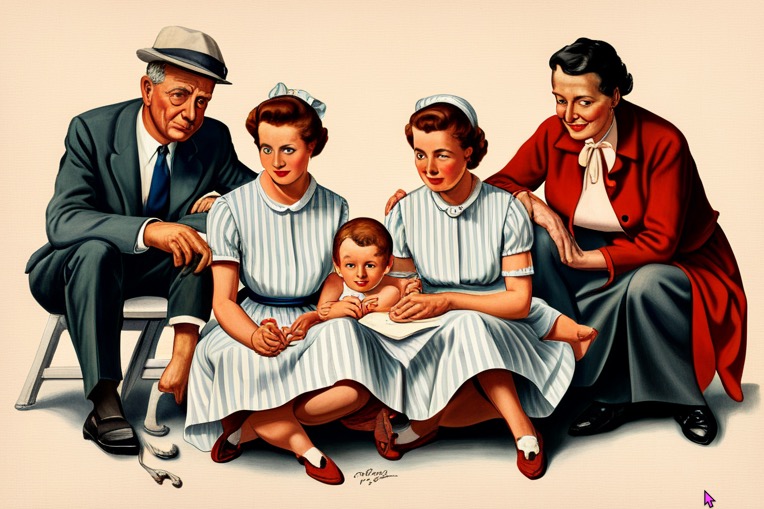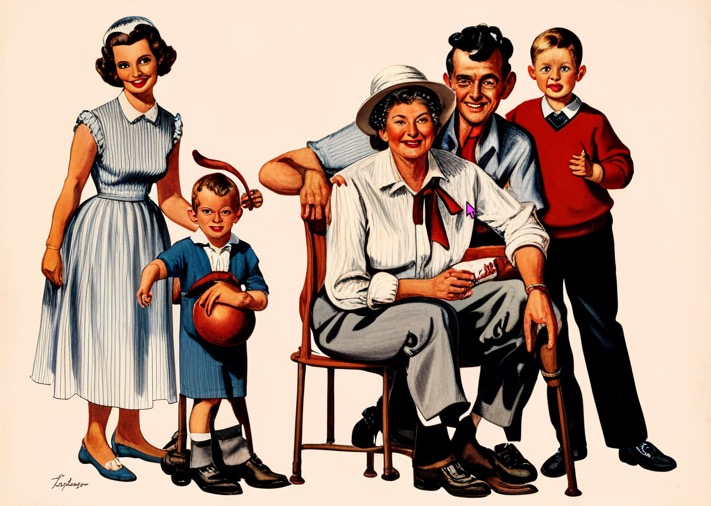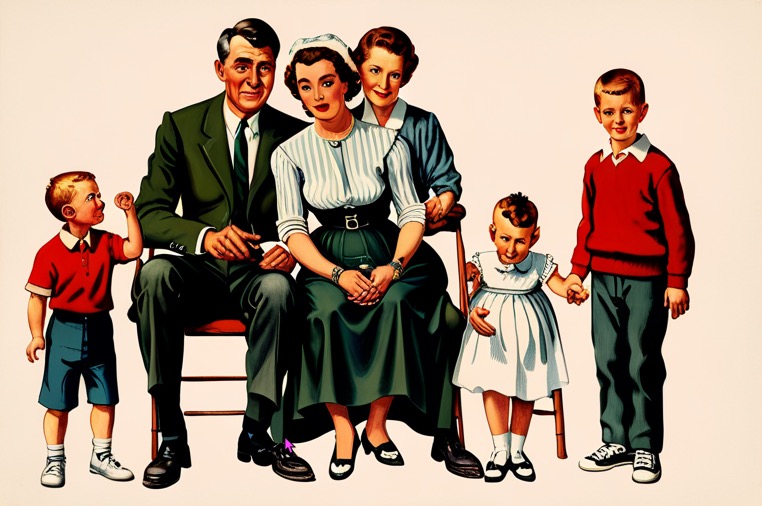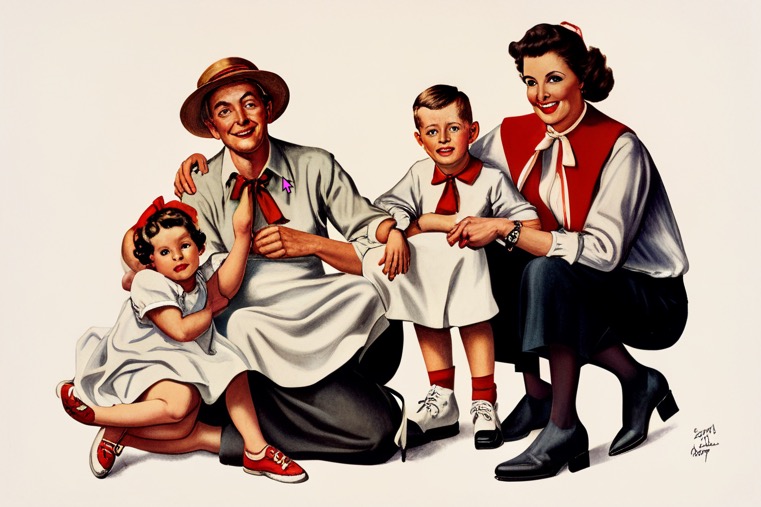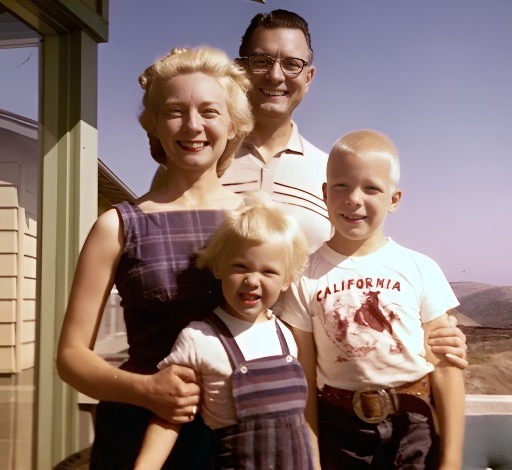Why AI imagery is not yet ready for prime time
I spent some time today unsuccessfully trying to generate an AI image showing a glowing 1950s family. For those of us with limited computer skills, AI is not ready for prime time.
American Thinker is not a big-budget operation despite its sophisticated content. One of the ways we save money is by using photos that are in the public domain or that the creators have designated as some sort of Creative Commons image that can be used for free or even edited.
This morning, I found myself editing a post (which will run tomorrow) about women’s central role in 1950s society and how the Trad Wife movement is trying to recapture that moment. I wanted to illustrate the post with a picture of a shiny, happy 1950s family of the type routinely shown in advertisements from that era. I couldn’t find a nice, free one, though, so I tried to use AI to create one.
I took this very nice photo, which is a Creative Commons image of the W.H. Shumard family in 1955, as the starting point for an AI prompt:
I tried using Fotor’s AI feature to “Disney-fy” the photo because I thought the Disney animation would create a shiny, happy 1950s feel. Instead, I got two weird multicultural families instead of the original version. I found that bizarre and unsettling.
I next thought to myself, “Well, why don’t I tell it to make this a Norman Rockwell style family? That should work.” Wrong. What emerged is hideous, barely related to the original photo, and, for some reason, the AI program turned the little boy into Joe Biden, only creepier:
Clearly, Fotor AI and I were incompatible on this one. Therefore, I switched to Pixlr’s AI. This time, I used a word prompt.
My prompt — “A happy mother, father, young son, and young daughter in the style of Norman Rockwell” — resulted in the following images. Not only did AI not understand the specific prompt (two mothers, multiple children), note how incredibly creepy and deformed all the people are. They remind me of the characters in that old Twilight Zone episode called “The Eye of the Beholder.”
Eventually, to get the smooth, 1950s magazine look I wanted, I went back to Fotor and used its “facial unblur” feature on that photograph I started with to sort of mimic the shiny quality of an old advertisement:
I know that some people are using AI to make phenomenal image galleries of incredible sophistication:
— stepfanie (@stepfaniex) September 20, 2023
(You can see the whole series here.)
However, for the rest of us, the non-artistic rubes who can, at best, feed a prompt into a low-end AI algorithm, things are different. AI is not ready for us to enter a golden age in which we can have an unlimited supply of free images that perfectly illustrate our essays.
